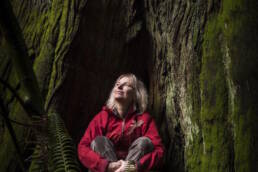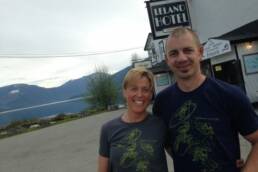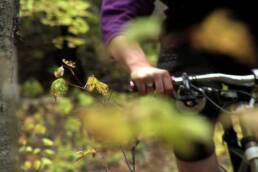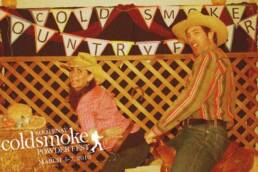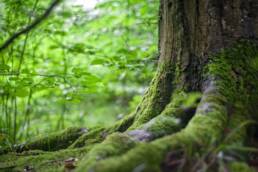Dr. Suzanne Simard has proven trees communicate with one another. Now she’s leading the Mother Tree project at 75 sites across British Columbia and sharing her research with those in the forestry industry. The question is, will they listen? By Arianna Murphy-Steed
In a grove of Douglas-firs near Cranbrook, British Columbia, Dr. Suzanne Simard stands sheltered under the trees’ thick green crowns. She bends—she’s spotted something. A purple orchid, the stem about the length of her finger, stretching to reach the sunlight that falls through a gap in the canopy.
It is quiet. To a casual observer, the orchid and the trees above are also silent. But Simard has been listening to forests for over 40 years. She knows that complex messages are flowing all around her. Under the layer of moss at her feet, fungal filaments and tree roots come together to form a kind of mass communication system called a mycorrhizal network. The roots of the orchid, she explains, are connected to this underground network too.
Originally from Kamloops, British Columbia, Dr. Simard has spent much of her life in forests. She studied ecology and it’s predominant patterns – a common one being competition for necessities such as water, soil carbon, and light. She wondered, was co-operation important as well? Her PhD project demonstrated that birch and fir, often considered competitors, actually share carbon and water. Even more extraordinary, the project found evidence of birch supplying fir with carbon (or vice versa) in times of need. Showing that these species actually communicate, in a fashion, and co-operate was big news, and Simard’s thesis was published in the prestigious scientific journal Nature.
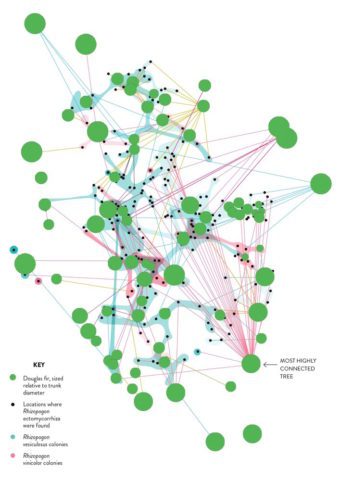
Now a professor of Forest Ecology at the University of British Columbia, Simard leads the Mother Tree Project. One of very few long-term, large-scale forestry experiments in B.C., the project includes 75 research sites established across the province, to investigate the dynamics of forest co-operation and communication. The team has created a map of the underground network connecting trees, and identified some trees that are particularly connected. Dubbed “mother trees,” these individuals play a role in distributing carbon, supporting those around them to thrive. The project is examining how retaining a portion of mature trees in a cut-block could help preserve the network and support future tree survival and growth. “Big licensees in the forest industry have taken notice of this research,” Simard says, “and with additional pressure from the public, [they] may actually feel compelled to leave some old trees behind.”
The public are definitely becoming more aware of Simard’s work. She has been featured in various documentaries, given multiple TedTalks and she’s also written a book, Finding the Mother Tree, which will be published in the spring of 2021 by Penguin Random House. (Ed note: Pre-orders can be made here.) It tells the story of her life and development as a researcher, and touches on her remarkable discoveries, not just related to forests and plant communities, but human communities and our resilience as a planetary whole. It’s all fitting, really, considering this type of knowledge-sharing mimics the role of the mother trees she studies. By sharing her scientific results in an accessible way, Simard is helping people to uncover just how complex, beautiful, and important forests are and can motivates them to learn more about the ways in which forests are managed.
Related Stories
Kootenay Sufferfest
What tastes so good in there? We are stoked to announce that Kaslo Sufferfest kicks off this weekend, with record…
Kootenay Spirit Festival
It's time to get in touch with your spiritual side, Kootenays. Buy tickets to the Kootenay Spirit Festival now.
New Kootenay Bike Website
Ahhh, the wonders of Facebook. Check your news feed every once in a while and voila, one of your…
Sternwheelers of Kootenay Lake
Our Art Director loves his history. He recently found this very comprehensive site exploring the sternwheelers of…
Kootenay Coldsmoke Yeehaw!
Another year of Kootenay Coldsmoke Powder Fest good times goes down in the history books. As the MC for the Powderkeg…
“Big Trees” Author To Speak in Nelson
Terry Nelson is the author of the newly released "Big Trees of the Inland Temperate Forests of British Columbia" and…


